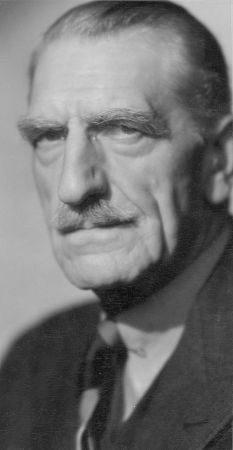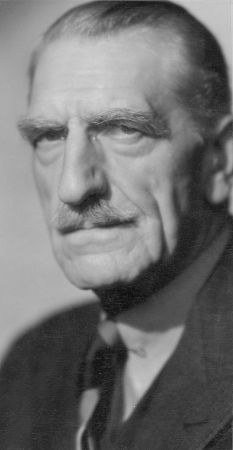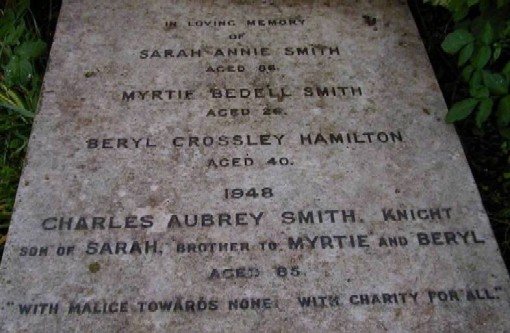He grew up in Chipping Camdon in the Cotswolds, and attended the Crescent House Academy in Brighton, where he was introduced to the game of cricket. At 12, he was sent to Charterhouse school where he made his name as a cricketer, and received some professional training in the sport.
In 1881, he entered St John's College at Cambridge University, where he developed an interest in theatre. He divided his time between the stage and the cricket pitch, where he earned the nickname 'Round the Corner Smith' due to his bowling technique. He was widely regarded as one of the best amateur bowlers in the kingdom.
After graduation, he accepted a position as a math teacher at Haywards Heath military academy. When the school closed in 1887, he accepted the captaincy of the Sussex County Cricket Club team, which eventually earned him invitations to international Test matches in Australia and South Africa. In South Africa, he and a teammate entered into the booming gold market and began their own brokerage firm. When the gold market collapsed, however, so did the business. While his partner fled the country, Smith became ill with typhoid, pleurisy, and pneumonia and was erroneously reported as having died by the British press.
After returning to Britain, he continued to dabble in theatre, joining the A. B. Tappings Stock Company in 1892; he would be billed throughout his career as C. Aubrey Smith. He made his West End debut in 'The Notorious Mrs Ebbsmith' in 1895. That December, he traveled with the company to New York when the play then opened on Broadway.
In 1915, he made his film debut in the silent, 'The Builder of Bridges.' His 1928 play, 'The Bachelor Father' was such a success, that when MGM acquired the rights to it, he was asked to reprise his role, beginning his Hollywood career at the age of 67.
In Hollywood, he set about establishing the Hollywood Cricket Club, the membership of which included other British and Commonwealth expatriates such as Erroll Flynn and Boris Karloff; it still exists today.
He was often cast as the quintessential Englishman or similar honor and duty type roles, he appeared over 80 productions including now classic films such as 'Tarzan the Ape Man' (1932); 'The Prisoner of Zenda' (1937); 'Another Thin Man' and 'The Four Feathers' (1939); 'A Bill of Divorcement' and 'Rebecca' (1940); 'Doctor Jekyll and Mr Hyde' (1941); and 'Ten Little Indians' (1945).
He was awarded the Commander of the Order of the British Empire in the 1938 King's Birthday Honours List, and was knighted in the 1944 King's Birthday Honours List.
He completed 'Little Woman' in September of 1948 and began preparing for his role 'That Forsyte Woman.' Before filming began, however, he came down with a cold that then developed into pneumonia which proved fatal.
He has a star on the Hollywood Walk of Fame at 6327 Hollywood Boulevard.
He grew up in Chipping Camdon in the Cotswolds, and attended the Crescent House Academy in Brighton, where he was introduced to the game of cricket. At 12, he was sent to Charterhouse school where he made his name as a cricketer, and received some professional training in the sport.
In 1881, he entered St John's College at Cambridge University, where he developed an interest in theatre. He divided his time between the stage and the cricket pitch, where he earned the nickname 'Round the Corner Smith' due to his bowling technique. He was widely regarded as one of the best amateur bowlers in the kingdom.
After graduation, he accepted a position as a math teacher at Haywards Heath military academy. When the school closed in 1887, he accepted the captaincy of the Sussex County Cricket Club team, which eventually earned him invitations to international Test matches in Australia and South Africa. In South Africa, he and a teammate entered into the booming gold market and began their own brokerage firm. When the gold market collapsed, however, so did the business. While his partner fled the country, Smith became ill with typhoid, pleurisy, and pneumonia and was erroneously reported as having died by the British press.
After returning to Britain, he continued to dabble in theatre, joining the A. B. Tappings Stock Company in 1892; he would be billed throughout his career as C. Aubrey Smith. He made his West End debut in 'The Notorious Mrs Ebbsmith' in 1895. That December, he traveled with the company to New York when the play then opened on Broadway.
In 1915, he made his film debut in the silent, 'The Builder of Bridges.' His 1928 play, 'The Bachelor Father' was such a success, that when MGM acquired the rights to it, he was asked to reprise his role, beginning his Hollywood career at the age of 67.
In Hollywood, he set about establishing the Hollywood Cricket Club, the membership of which included other British and Commonwealth expatriates such as Erroll Flynn and Boris Karloff; it still exists today.
He was often cast as the quintessential Englishman or similar honor and duty type roles, he appeared over 80 productions including now classic films such as 'Tarzan the Ape Man' (1932); 'The Prisoner of Zenda' (1937); 'Another Thin Man' and 'The Four Feathers' (1939); 'A Bill of Divorcement' and 'Rebecca' (1940); 'Doctor Jekyll and Mr Hyde' (1941); and 'Ten Little Indians' (1945).
He was awarded the Commander of the Order of the British Empire in the 1938 King's Birthday Honours List, and was knighted in the 1944 King's Birthday Honours List.
He completed 'Little Woman' in September of 1948 and began preparing for his role 'That Forsyte Woman.' Before filming began, however, he came down with a cold that then developed into pneumonia which proved fatal.
He has a star on the Hollywood Walk of Fame at 6327 Hollywood Boulevard.
Bio by: Iola
Family Members
Advertisement











